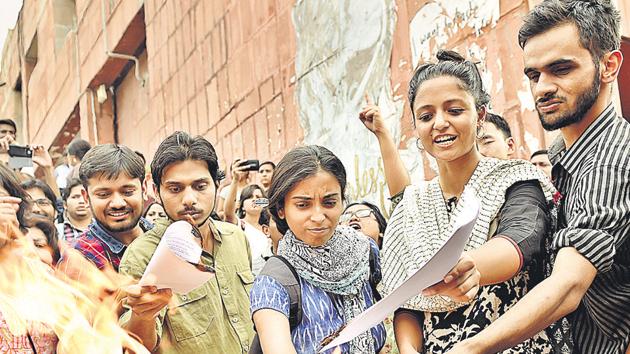Undercover ops, trips to Kashmir, surveillance: Why JNU probe took 3 years
Delhi Police said the investigation required multiple visits to Jammu and Kashmir and Uttar Pradesh to track down people other than Kanhaiya Kumar, Umar Khalid and Anirban Bhattacharya, the three prime accused in the sedition case.
Collecting information covertly, multiple visits to different states and many sessions of questioning — these were the reasons why it took almost three years to submit the charge sheet in the sedition case, said police.

Delhi Police said they had their young officers pose as students and enter the campus in order to get information about the February 9, 2016 event.
Police said the investigation required multiple visits to Jammu and Kashmir and Uttar Pradesh to track down people other than Kanhaiya Kumar, Umar Khalid and Anirban Bhattacharya, the three prime accused who the police have charged with sedition.
Police said that in many instances, students known to the seven suspects were secretly photographed and their details were obtained by their men who were placed on campus.
A senior officer from the Delhi Police’s special cell said that their nine-member team paid 13 visits to J&K in last two years after identifying seven of the participants who were suspected to have allegedly shouted anti-India slogans with masks.
“We formed a team of young police officers who posed as students and spent time in the campus. They also used to go in groups at events in campus and eavesdrop on conversations related to the protests. It helped us in tracing links related to the seven suspects,” the officer said. “We traced their call details and once their links with the suspects were confirmed, they were called in for questioning. This is how we identified and tracked them”
Police said five months after registering the case, their investigations were delayed by almost seven to eight months as the support from the J&K police weakened. This was due to violence following Burhan Wani’s killing .
“Our investigators obtained a video clip of the protest, in which we could spot one Kashmiris, removing his mask while leaving the protest venue. We identified him as Aqueeb Hussain, who was then a student of a medical college in Ghaziabad,” the officer said.
The police said they questioned Hussain, but he initially claimed innocence. “After he was confronted with footage and electronic evidence, he admitted to have participated in the event. We also found that Hussain raised anti-India slogans.”
Police said it was on Hussain’s instance, and based on statements of other participants and electronic evidence, they identified six other Kashmiris who were then asked to join the probe. “We gave them a questionnaire to ascertain the sequence of events on February 9. All of them denied their presence. But we confronted them with the evidence after which they admitted,” said the officer. Police also said that because the accused were on bail there was no time limit for them to file the charge sheet.
Read | JNU sedition case: Witnesses, videos, posters listed as evidence by Delhi police






